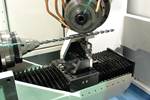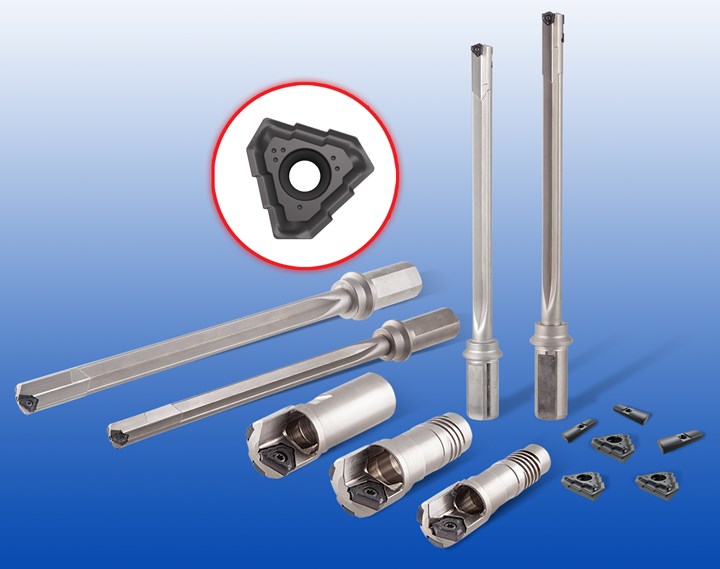Gundrill Tool Extends Hole-Making Productivity for Injection Molds
Minimized downtime, enhanced machine productivity and the ability to drill interruption and cross holds are some key features behind the Iscar Tri-Deep gundrill.
Iscar USA highlights the Tri-Deep gundrill, a tool designed to drill holes with a depth-to-diameter ratio of more than 10X the diameter and up to 150X the diameter ratio. The gundrill is designed to minimize machine downtime and maximize productivity up to 4X over a conventional braze gundrill. It is useful for drilling cooler lines and heater holes on injection molds.
Part of Iscar’s hole-making product line, the Tri-deep gundrill carries three cutting edges with a chip-splitting cutting edge on the TOGT inserts, two cutting edges with a chip-splitting edge on the LOGT insert and a single chip-splitting cutting edge on the ZSGT insert. The insert has a positive rake chip-breaker design, producing narrow chips for ensured chip evacuation, with a wiper for high hole surface quality and high feed rates. All inserts are made from IC908, a versatile, PVD-coated grade.
The Tri-Deep is also equipped with Iscar’s advanced gundrill technology, which provides optimal geometric and dimensional quality for both deep and shallow drilling. The Tri-Deep gundrill can be run on a CNC lathe, CNC machining center, HBM machine, HMC machine and gundrill machine.
According to Iscar, the gundrill offers direct insert mounting — no adjustment is needed for an accurate hole diameter. It also has two indexable carbide guide pads, one for support and one for dimensional control. The ease of changing these versus resharpening on a braze gundrill ensure no downtime, a key feature to satisfy mold builders.
The Tri-deep gundrill is available in diameters ranging from 10-32 mm and in 10, 15 and 25 drilling length-to-diameter ratios. Longer gundrills with up to a 2,400-mm length can be supplied on request from 14-32 mm, and a 1,650-mm length from 10-13.99 mm.
Related Content
-
Precision Meets Innovation at IMTS 2024
After attending IMTS, it's clear that the integration of advanced technologies is ready to enhance precision, efficiency and automation in mold manufacturing processes. It’s a massive event, so here’s a glimpse of what the MMT team experienced firsthand.
-
How to Use Continuing Education to Remain Competitive in Moldmaking
Continued training helps moldmakers make tooling decisions and properly use the latest cutting tool to efficiently machine high-quality molds.
-
3D Printing Enables Better Coolant Delivery in Milling Operations
Just like 3D printing enabled conformal cooling channels in molds, additive manufacturing is now being used to optimize coolant delivery in cutting tools.








.png;maxWidth=300;quality=90)







